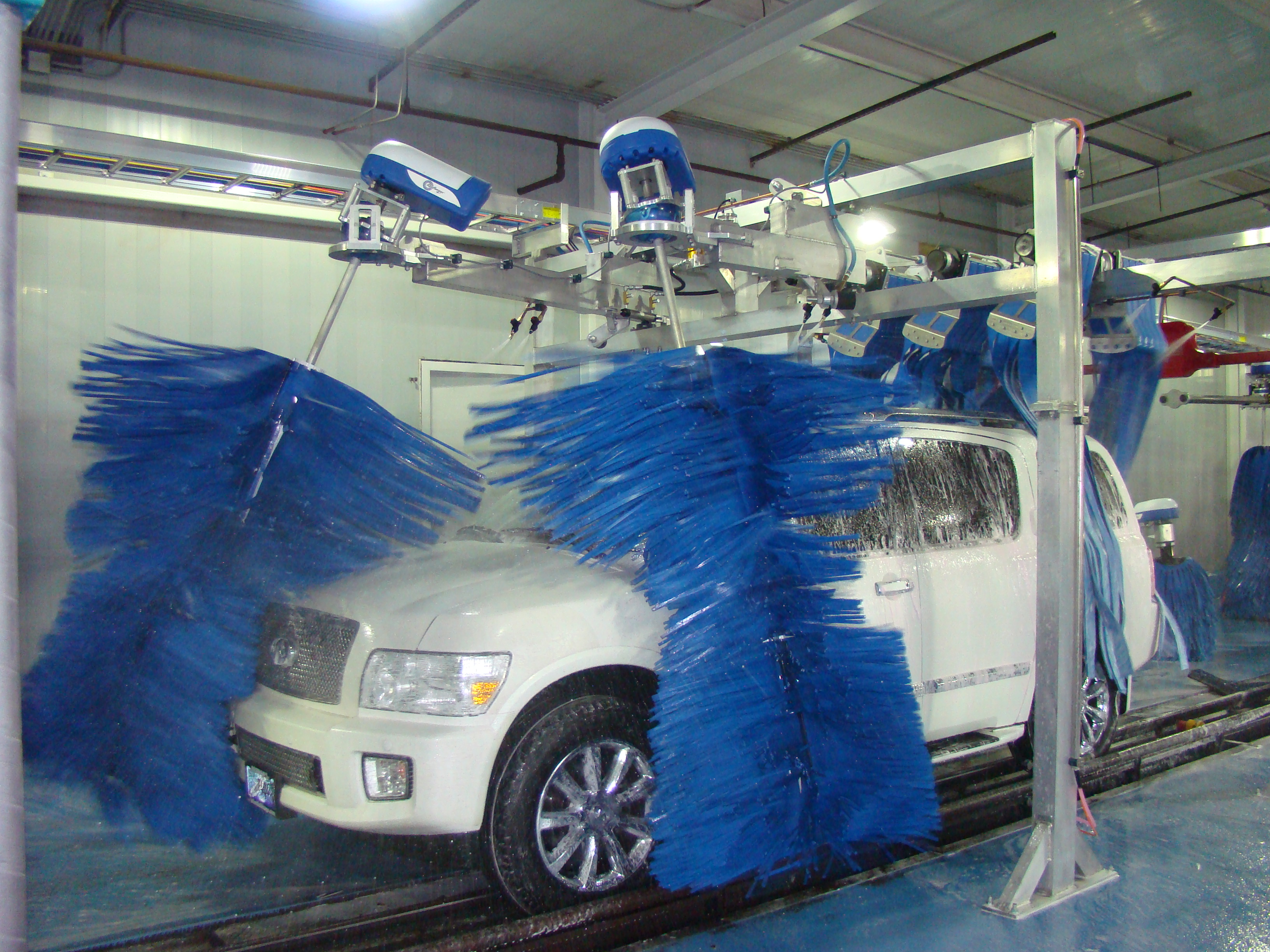Each car wash, to the untrained eye, is the same. Customers drive into a bay or onto a conveyor and let the machine do the work of removing dirt and grime from their vehicles. The unique styles of wash can go beyond just personal preference; they can
be a major determinant in the business model of a car wash, from vehicle loading, to various cleaning technologies, to cars-per-hour capabilities and revenue per car, to the level of clean and shine.
The selection of a wash system usually starts with a choice between an in-bay automatic system or a conveyorized-tunnel system. In-bay systems are those in which the vehicle takes a stationary position in the wash bay with the aid of vehicle-sensing technology
that eliminates drive-on floor mechanisms. This technology makes it easier to drive into and out of the wash. A tunnel system works by mechanically rolling the vehicle through the wash via a chain-driven conveyor track.

Within these two broader styles, there is even greater variation. Below is a more detailed breakdown of these wash systems:
In-Bay Automatic
Most commonly found at gas stations, in-bay automatics allow the driver to pull into the bay with the aid of the virtual treadle, helping to position the vehicle properly. The vehicle remains stationary as the washing, polishing and drying equipment moves
over and around it. Wash styles offered by in-bay automatics include touch-free, where high-pressure water is used to clean the vehicle, and friction, where soft-cloth “brushes” are used to clean, spread detergent and polish on the vehicle
before they are rinsed off.
Typical characteristics of in-bay automatics include:
- Simple customer interaction
- Impulse-driven purchases
- Ideal for smaller lot sizes
- Initial equipment/building is usually $200,000 or less
Conveyorized-Tunnel System
In this system, a conveyor dollie and chain system moves the vehicle through a wash tunnel, along which the various wash operations are performed. Basic, exterior-only tunnel washes have the driver position the car on the conveyor and then remain
in the vehicle as the wash services are completed. Full-service tunnel systems have the driver exit the vehicle while a wash crew cleans the inside of the vehicle and then wipes down the exterior after it exits the tunnel. Because of the design
and method of operation of tunnel systems, friction washes are most common in tunnel systems.
Typical conveyorized-tunnel systems are defined by:
- Higher wash volumes
- Higher startup costs and labor requirements - $1.5 million to $2 million for equipment/building
- Larger lot sizes required
Overall, studies show that in-bay automatics make up 13% of the vehicle-wash market with exterior-only conveyorized tunnels accounting for 14% of the market. By comparison, the most popular wash technique is home washing, at 41%, but that
number has been declining steadily in recent years. This is due to an increase in water-usage restrictions in a number of areas, as retail car washes use far less water than the private home washer. Another reason why these washes are
successful is due to the convenience that retail car washes can provide to consumers, whose lives are becoming busier and busier.
Decision, Decisions
While wash operators may go into the equipment-selection process with a preferred wash technology in mind, the ultimate decision can only be made after weighing all of the variables. The most important is the type of wash that the customer base
in the area will gravitate toward. A second determining factor is the size and shape of the wash site. As mentioned, smaller sites lend themselves to in-bay automatics since tunnel systems can range, on average, from 80 to 120 feet in length.
The type of establishment to which the wash will be affixed is also important. In-bay automatics are popular at gas-station sites because they can fit easily among fuel islands and the convenience store. Standalone washes lend themselves to tunnel
systems because there is more room to spread out and accommodate tunnel length and the lines of cars that may be waiting to use the wash. The physical location of the site is also significant, with busy corners controlled by traffic lights
the most desirable.
In the end, the most successful washes are those that fit harmoniously in their sites. Both in-bay automatic and tunnel wash systems have their benefits, but they can only be fully realized if the right style is chosen for the right location.
Learn more about all of your wash options at opwvws.com.